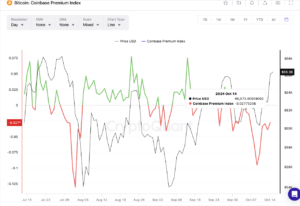iPhone 16 review: more buttons and speed for Apple’s standard phone | Apple
Apple’s latest iPhone bucks the trend of buttons vanishing from phones, gaining not one but two new controls on the outside, plus a big jump in chip performance and two-day battery life on the inside.
The standard iPhone 16 is Apple’s smallest and lowest-priced handset in the new 16 series, costing from £799 (€959/$799/A$1,399) sitting below the bigger and more expensive 16 Plus and 16 Pro models.
The pitch for the vanilla iPhone hasn’t changed in years, offering most of what is good about Apple’s phones but with fewer bells and whistles than its top Pro models. At a glance, the 16 looks identical to the many handsets that have come before it: an aluminium and glass sandwich weighing a relatively light 170g.
The 16 even has the same sized 6.1in screen as before, where the Pro models have grown. The display has similar brightness and crispness as the outgoing iPhone 15 and is still stuck at a 60Hz refresh rate, which can make scrolling and motion more jarring compared with models with faster screens. It also lacks the Pro iPhone’s always-on display option.
The cameras on the back have been rearranged to bring the dual lenses in line, reminiscent of the iPhone 12. That leaves the two new buttons as the main physical upgrades, including the useful action button from the 15 Pro last year that replaces the mute switch and can be used for a variety of functions such as turning on the torch, changing focus modes, recording voice memos and other actions using the Shortcuts app.
The standard iPhone also has the same new camera control button as the 16 Pro, which quickly launches the camera, zooms and changes settings, and shoots photos.
It runs iOS 18 but lacks Apple’s much-advertised AI features, which won’t arrive in beta as part of iOS 18.1 update until later in October in the US and December for the UK, Australia and other non-US English-speaking countries, while the rest of Europe is out of luck for the foreseeable future.
Specifications
-
Screen: 6.1in Super Retina XDR (OLED) (460ppi)
-
Processor: Apple A18
-
RAM: 8GB
-
Storage: 128, 256 or 512GB
-
Operating system: iOS 18
-
Camera: 48MP main + 12MP UW; 12MP front-facing
-
Connectivity: 5G, wifi 7, NFC, Bluetooth 5.3, Thread, USB-C, Satellite, UWB and GNSS
-
Water resistance: IP68 (6 metres for 30 mins)
-
Dimensions: 147.6 x 71.6 x 7.8mm
-
Weight: 170g
Faster A18 chip with solid battery life
The 16 has a new A18 chip at its heart, which is 30% faster than the two-year-old A16 used in its predecessor with 40% faster graphics. It feels snappier in operation and will stay fast for a long time, as well as enabling the imminent AI features.
The chip is also more power efficient, which helps the 16 have very long battery life for a phone this size. It manages to last more than 48 hours between charges for general usage, including a mixture of 5G and wifi, while actively using the screen for more than seven hours. It should last through even the heaviest of days.
Sustainability
Apple says the battery should last in excess of 1,000 full-charge cycles with at least 80% of its original capacity and can be replaced for £95. Out-of-warranty screen repairs cost £289. The 16 has repair guides available and was awarded seven out of 10 for repairability by specialists iFixit.
It contains more than 30% recycled material, including aluminium, cobalt, copper, gold, lithium, plastic, rare earth elements, steel, tin and tungsten. The company breaks down the phone’s environmental impact in its report. Apple offers trade-in and free recycling schemes, including for non-Apple products.
Camera
The dual camera system on the back of the phone is broadly the same as last year’s model, including a 48MP main camera and a 12MP ultrawide, which can be controlled using touch or the new physical camera control button next to the power button.
Main camera produces images that are great across a range of lighting conditions, while the 2x in-sensor zoom remains useful in good light but struggles a bit in duller conditions. The ultrawide now has autofocus and a slightly faster lens, producing better photos in dimmer environments. It also enables a macrophotography mode to shoot closeup images at up to 2cm away from the object – a fun feature that was limited to Apple’s Pro models until now.
The 16’s camera also has the interesting photographic styles feature from the 16 Pro, which works a bit like advanced filters adjusting the colour, tone and palette of photos either when shooting them or after the fact. The camera can also shoot spatial photos and videos for viewing on headsets such as the Vision Pro, and has the impressive audio mix feature for video from the 16 Pro.
Overall, the 16’s camera does a good job in most conditions, but its lack of a telephoto camera holds it back against similarly priced Android rivals.
Price
The iPhone 16 costs from £799 (€959/$799/A$1,399) with 128GB of storage.
For comparison, the iPhone 16 Plus costs £899, iPhone 16 Pro costs £999, the iPhone 16 Pro Max costs £1,199, the Google Pixel 9 Pro costs £999, the Samsung Galaxy S24 Ultra costs £1,249 and the Fairphone 5 costs £499.
Verdict
The iPhone 16 may not look that different from the last few iterations of Apple’s standard smartphone but it features a range of updates that make it more interesting than it appears on first glance.
The added action button from last year’s 15 Pro is genuinely useful for one-button access to your most used app or feature, such as the torch. The camera control button is equally useful for quickly opening the camera and shooting photos, even if it is a little fiddly to use to adjust settings with any accuracy.
The camera itself is solid, capturing great photos pretty easily. The new photographic styles feature and macrophotography are great fun for those that want to get creative. The lack of a real zoom camera, faster and less jerky screen, and always-on display is disappointing. They are features common to rivals but Apple keeps for the iPhone 16 Pro.
The much faster chip and solid two-day battery life are very welcome, and should help the iPhone 16 last longer before it needs service or replacing. It may not be the most exciting phone any more, but the iPhone 16 is a big jump up from five-year-old models and is ready to go the distance.
Pros: fast, good dual camera with macro mode, decent screen, great size, action button, camera control button, photographic styles, USB-C, great battery life, long software support, Face ID.
Cons: no telephoto camera, screen slower than competition and Pro iPhones, no always-on display mode, samey design.
#iPhone #review #buttons #speed #Apples #standard #phone #Apple
News plays a pivotal role in our lives by keeping us informed and connected to the world. It serves as a critical source of information, offering updates on current events, politics, economics, science, and more. Through news, we gain awareness of global issues and local developments, helping us make informed decisions in our personal and professional lives. News also fosters discussion and debate, encouraging critical thinking and perspective-taking. Moreover, it promotes transparency and accountability among governments, businesses, and other institutions. In a rapidly changing world, staying updated with the news enables us to adapt to new challenges and opportunities, shaping our understanding of the complexities of society. Ultimately, news is not just about information; it empowers us to participate actively in the world around us, contributing to a more informed, engaged, and responsible global citizenry.
Health is fundamental to our well-being and quality of life, making it an essential aspect of daily existence. It encompasses physical, mental, and emotional aspects, influencing our ability to function effectively and enjoy life fully. Prioritizing health allows individuals to maintain optimal physical fitness, reducing the risk of diseases and promoting longevity. Mental health, equally crucial, affects our cognitive abilities, emotional stability, and overall happiness. Investing in preventive healthcare through exercise, balanced nutrition, and regular medical check-ups helps in early detection of potential health issues, ensuring timely intervention and treatment. Beyond individual benefits, a population’s health impacts societal productivity and economic stability. Governments and organizations worldwide emphasize public health initiatives to address pandemics, health disparities, and promote overall well-being. Ultimately, health serves as the foundation upon which we build our lives, influencing our ability to pursue goals, nurture relationships, and contribute meaningfully to society.
Money plays a crucial role in our lives as a means of financial security and freedom. It enables us to meet basic needs such as food, shelter, and healthcare, while also providing opportunities for education, travel, and personal growth. Beyond material comforts, money facilitates social connections and experiences that enrich our lives. It empowers individuals to invest in their futures, whether through savings, investments, or entrepreneurial ventures, thereby fostering economic stability and growth. However, the pursuit of wealth should also be balanced with ethical considerations, as money can influence relationships and societal dynamics. Responsible management of finances is key to achieving long-term goals and mitigating financial stress. Ultimately, while money is a tool for achieving aspirations and fulfilling desires, its true value lies in how it is utilized to improve both personal well-being and the broader community.
Earning Easy Money in 2024: Opportunities and Considerations 💸
In 2024, the landscape of earning easy money presents diverse opportunities, albeit with considerations. The digital age offers platforms for freelancing, online trading, and e-commerce, allowing individuals to leverage skills and creativity for financial gain. Cryptocurrency investments continue to allure with potential for quick profits, yet they entail high volatility and risk. Moreover, the rise of the gig economy enables flexible work arrangements through apps and websites, offering quick payouts but often without job security or benefits. Passive income streams such as rental properties and investments in stocks or bonds remain viable, but demand initial capital and ongoing management. Amid these options, caution is essential to avoid scams and unsustainable ventures promising overnight success. Ultimately, while the allure of easy money persists, informed decisions, diligence, and a long-term perspective are crucial for sustainable financial growth and security in the dynamic year ahead.




